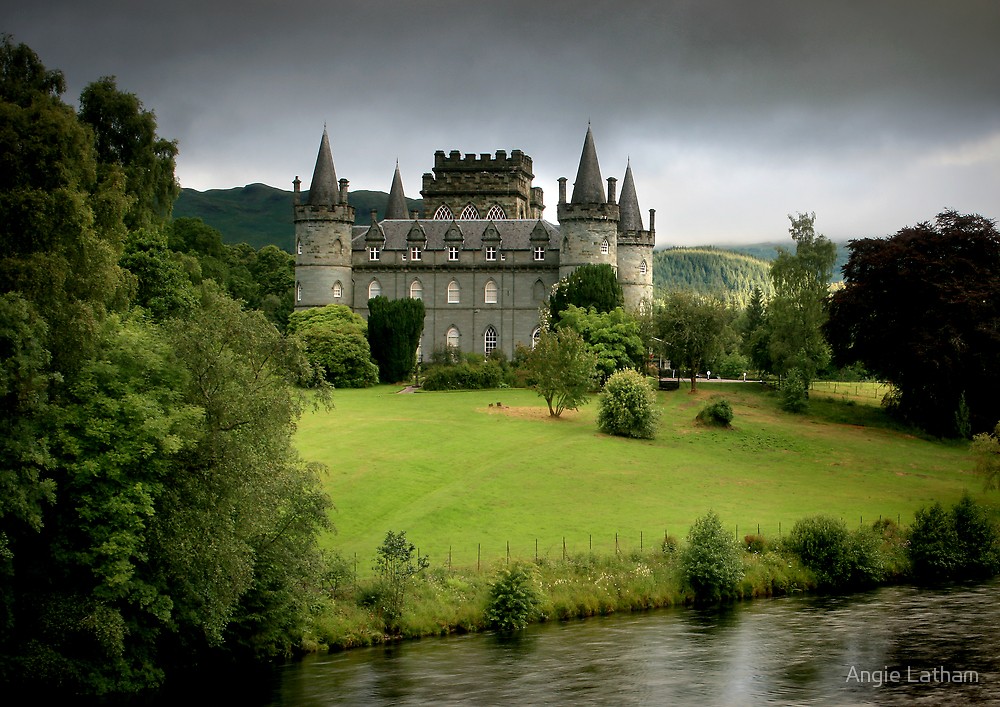Category: history
Clan: Campbell – Motto: Ne Obliviscaris (Forget Not)
Clan Campbell : History, Feuds, Tartans, and Castles
Clan Campbell, politically (and in every other way), was the most successful clan in Scottish history. With that, it has not survived the turning of time’s wheel without a share of its own dark days and disasters. The Campbells of Argyll represent one of the most successful arms of the Clan. However, even they struck hard times due to political and religious regime change. As with all the clans of Scotland, it was often the chosen allegiance to Kings and their religious leanings that made or broke its fortune, as we shall see.
The Campbells were known as “hard nosed” and “blood thirsty”. They were lawyers, “Lords of the Halls”, and “crooked”, according to legend.
Origin of Campbell Name
The Campbell name, it is said, was derived from the Gaelic for ‘wry mouth’ or even ‘crooked mouth’. This may be due to an ancestor having a physical abnormality. Before this nickname stuck, Clan Campbell was known as Clan Dairmid.
The Campbell name rose to prominence towards the end of the 1200s, when Cailean Mór Caimbeul, famous warrior, was active. Cailean Mór was allegedly a cousin of Robert the Bruce and took part in The Great Cause, a scuffle for the throne of Scotland between the Bruce and John Balliol which had the unfortunate consequence of providing leverage for Edward I of England (the Hammer of the Scots) to assume over lordship of Scotland. This turn of events led to the Scottish Wars of Independence as Robert the Bruce fought to win back his crown.
The legendary and edifying history of Cailean Mór has resulted in each successive chief of the Campbell Clan taking this name and styling himself MacCailean Mór, (to mean ‘a son of’ Cailean Mór). This famous Scottish warrior was knighted by Robert The Bruce in 1280 and his son, Neil, was given lands in Loch Awe, and Argyll. This is also where the Campbells established their power base for the next seven hundred years.
https://www.highlandtitles.com/blog/clans-scotland-campbell/
Clan Feuds: Campbell and MacDonald
One of the Scottish clans who hated Campbell’s turn of fortune most was Clan Donald. They are now better known as MacDonald. In the thicker mists of history Clan Donald had been the most powerful clan in the Western Highlands. Descended from Viking kings and known as the “Lords of the Isles”, they commanded the Hebrides and much of the West coast of Scotland. But after 1493, when King James IV forfeited MacDonald lands, their fortunes declined rapidly just as those of Clan Campbell, with royal blessing, were steadily rising (The first Earldom of Argyll had been created in 1457). This must have been more than irksome, because it has led to one of the longest and most famous tribal feuds in world history.
Where it began (as Neil Diamond sings) we can’t begin to know it. But we do know some of the bloodier episodes, and they began long before the Massacre at Glencoe. Clan rivalries fulminated in the 16th century, but the 17th century was a particularly bloody period for the Campbells and the MacDonalds.
Under the auspices of the English Civil War, which spread into Scotland, clan feuding could dress itself in the livery of state sanctioned violence, but the struggle between Covenanters (roundheads) and Royalists (cavaliers) wasn’t the only motivation for the clans of Scotland. Upset over losing their land, the MacDonalds, along with other neighbouring clans, made an agreement to bring down the Campbells. At the time the Campbell chief, Archibald Campbell, 1st Marquess of Argyll was, believe it or not, NOT a royalist! He was committed to the roundhead cause.
The MacDonalds sided with the Royalists, along with other anti-Campbell Clans. Together they fought under James Graham, Marquess of Montrose. But be under no illusions, it wasn’t the Royalist cause so much as Campbell blood the highland troops were after. Written by: Stewart Borland, 5th November 2015

My Maternal 13th. Great Scottish Grandfather, Archibald “Gillespic Roy” Campbell, 4th. Earl of Argyll
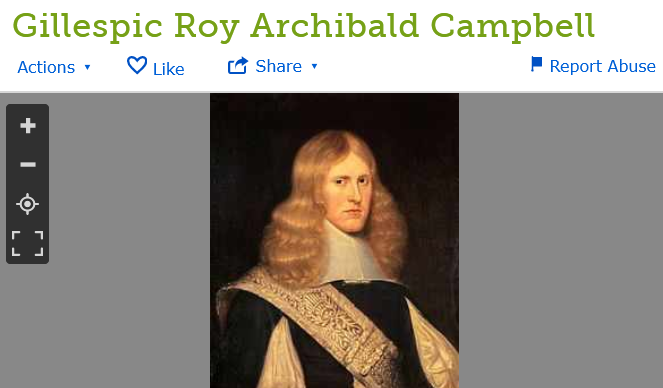
“Gillespic Roy” Archibald Campbell, 4th. Earl of Argyll, “The Red Campbell”
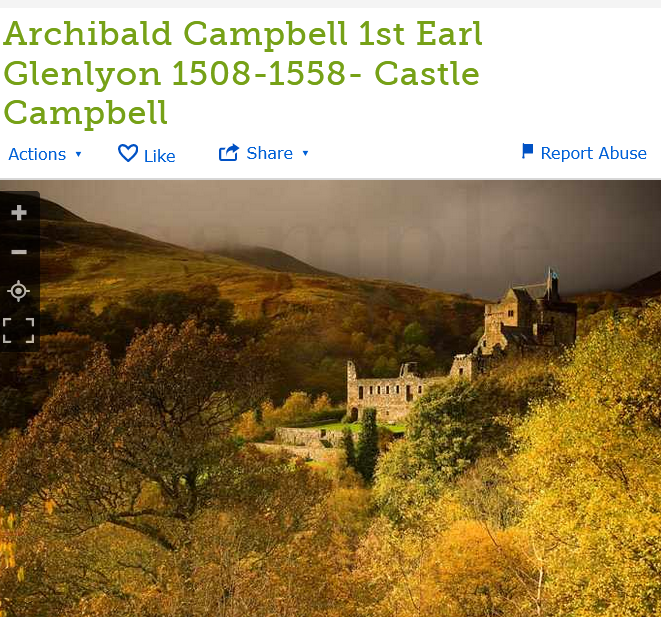
Archibald Campbell, 4th Earl of Argyll, aka Gillespic Roy and the “Red Campbell”, was the son of Colin Campbell, 3rd Earl of Argyll and Lady Jean Gordon.
He married, firstly, Lady Helen Hamilton, daughter of James Hamilton, 1st Earl of Arran and Janet Bethune, after 27 August 1529.
He married, secondly, Lady Margaret Graham, daughter of William Graham, 3rd Earl of Menteith and Margaret Moubray, on 21 April 1541 at Priory of Inchmahome, Inchmahome.
He married by contract, thirdly, Catherine MacLean, daughter of Lachlan ‘Cattanach’ MacLean, 7th of Duart and Marion MacLean, on 12 March 1545/46.
He died between 21 August 1558 and 2 December 1558 at Dulnynn, Scotland. The Peerage
—
Archibald Campbell was married three times. He was married firstly to Lady Helen Hamilton (died in or before 1541), daughter of James Hamilton, 1st Earl of Arran and Janet Bethune.They had a son:
Archibald Campbell, 5th Earl of Argyll
Lady Janet Campbell, who married Calvagh O’Donnell, Lord of Tyrconnell.
Archibald was married secondly to Lady Margaret Graham, daughter of William Graham, 3rd Earl of Menteith and Margaret Moubray, on 21 April 1541 at the Priory of Inchmahome.They had three children:
Colin Campbell, 6th Earl of Argyll
Lady Margaret Campbell (died February 1572)
Lady Jeanette (or Janet) Campbell, who married Hector Og Maclean, 9th of Duart.
Lady Agnes Campbell (born c. 1538)
Archibald was married thirdly to Catherine MacLean, daughter of Hector Mor Maclean, 8th of Duart and Mary MacDonald, on 12 March 1546.He had two other children who were illegitimate:
Mary Campbell, who married Sir James Stewart of Ardmaleish, son of Ninian Stewart of Ardmaleish and Elizabeth Blair.Agnes Campbell (born illegitimately to Janet Gordon, daughter of Alexander Gordon, 3rd Earl of Huntly), who married Sir Turlough Luineach O’Neill, in September 1569. source: Wikipedia

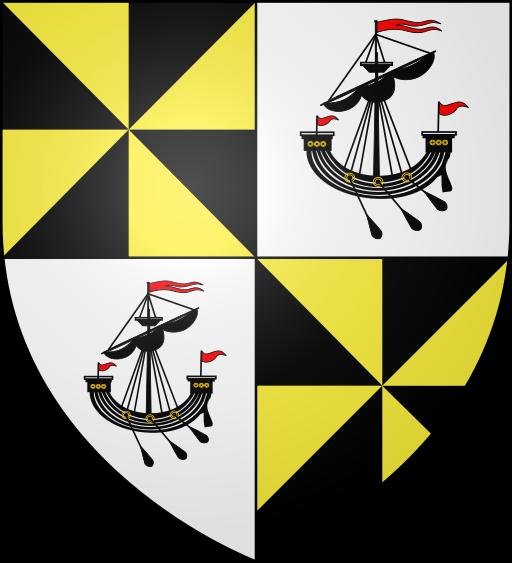

My Maternal 14th. Great Scottish Grandfather, Sir Archibald Gillispie Campbell, 2nd. Earl of Argyll
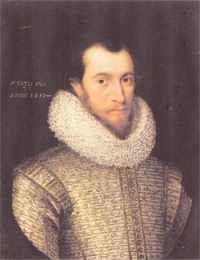
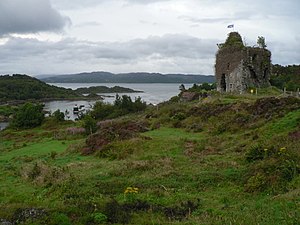

Sir Archibald Gillispie Campbell, 2nd. Earl of Argyll

Tarbert Castle, Kyntire, Scotland
Tarbert Castle is located on the southern shore of East Loch Tarbert, at Tarbert, Argyll, Scotland, at the north end of Kintyre. Tarbert Castle was a strategic royal stronghold during the Middle Ages and one of three castles at Tarbert. The castle overlooks the harbour and although pre 14th century in construction, the tower dates back to 1494 and the visit of James IV to the Western Highlands. Wikipedia

Graphic of the Arms of the Dukes of Argyll by the late Don Smith
Name: Knight Archibald Gillispie Campbell, 2nd. Earl of Argyll
Born: 6 May 1459 in Tarbert Castle, Argyll, Scotland
aka: Sir Knight Archibald “Gillispie” of Argyll, Lord High Chancellor Scotland
Sir Archibald Gillispie Campbell – 2nd Earl of Argyll; Lord High Chancellor of Scotland
Married: 22 June 1479 in Renfrewshire, Scotland to Lady Elizabeth Isabel Stewart, of Lennox, and Countess of Argyll.

Flodden Memorial at the site of the battle
The Battle of Flodden, Flodden Field, or occasionally Branxton (Brainston Moor) was a military combat in the War of the League of Cambrai between the Kingdom of England and the Kingdom of Scotland, resulting in an English victory. The battle was fought in Branxton in the county of Northumberland in northern England on 9 September 1513, between an invading Scots army under King James IV and an English army commanded by the Earl of Surrey. In terms of troop numbers, it was the largest battle fought between the two kingdoms. James IV was killed in the battle, becoming the last monarch from the British Isles to die in battle. Wikipedia
Died: 9 September 1513 at the Battle of Flodden Field, Branxton, Northumberland, England.

Kilmun Parish Church and Argyll Mausoleum, Kilmun, Cowal Peninsula, Scotland
Buried: September 1513 in Kilmun Parish Church and Argyll Mausoleum, Kilmun, Cowal Peninsula, Scotland
Findagrave Memorial ID #61441076
Clan Campbell (Scottish Gaelic: Na Caimbeulaich [na ˈkʰaimbəl̪ˠɪç]) is a Highland Scottish clan. Historically one of the largest and most powerful of the Highland clans, their lands were in Argyll and the chief of the clan became the Earl and later Duke of Argyll.
https://en.wikipedia.org/wiki/Clan_Campbell
Biography:
Archibald was the eldest son of Colin Campbell, 1st Earl of Argyll and Isabel Stewart, daughter of John Stewart, 2nd Lord Lorne.
He was made Master of the Royal Household of James IV of Scotland on 24 March 1495. After a crisis of law and order in the west of Scotland, Argyll was made governor of Tarbert Castle and Baillie of Knapdale, and this was followed by an appointment as Royal Lieutenant in the former Lordship of the Isles on 22 April 1500. Argyll eventually rose to the position of Lord High Chancellor of Scotland. His “clan” was rivalled only by Clan Gordon.
The Earls of Argyll were hereditary Sheriffs of Lorne and Argyll.However, a draft record of the 1504 Parliament of Scotland records a move to request Argyll to hold his Sheriff Court at Perth, where the King and his council could more easily oversee proceedings, if the Earl was found at fault. The historian Norman Macdougall suggests this clause may have been provoked by Argyll’s kinship with Torquil MacLeod and MacLean of Duart. These western chiefs supported the suppressed Lordship of the Isles. The Earl of Argyll was killed at the Battle of Flodden on 9 September 1513, with the king and many others. He is buried at Kilmun Parish Church.
Family:
By his wife Elizabeth, a daughter of John Stewart, 1st Earl of Lennox, Argyll had issue:1. Colin Campbell, 2nd Earl of Argyll
2. Archibald Campbell of Skipness (d 1537 escaping from Edinburgh Castle), second husband of Janet Douglas, Lady Glamis
3. Sir John Campbell of Calder (d.1546) ancestor of the Earls Cawdor
4. Donald Campbell the Abbot of Coupar Angus
5. Margaret Campbell, who married John Erskine, 5th Lord Erskine
6. Isabel Campbell, married Gilbert Kennedy, 2nd Earl of Cassilis
7. Janet Campbell, married John Stewart, 2nd Earl of Atholl
8. Jean Campbell, married Sir John Lamont of that ilk, son Duncan Lamont
9. Catherine Campbell, married Lachlan ‘Cattanach’ Maclean, 11th Chief of Duart, secondly to Archibald Campbell of Auchinbreck
10. Marion Campbell, married Sir Robert Menzies of that ilk
11. Elen Campbell, married Sir Gavin Kennedy of Blairquhan
12. Mary CampbellReferences:
Year book of the American Clan Gregor Society. 1978. “Archibald Campbell, 2nd Earl of Argyll. He was the son of Colin Campbell, second Lord Campbell and 1st Earl of Argyll, …
Macdougall, Norman, James IV, Tuckwell (1997), 107, citing Register of the Great Seal, vol. 2, no. 2240.
Macdougall, Norman, James IV, Tuckwell (1997), 178, citing Register of the Privy Seal, vol. 1, nos. 413, 513, 520.
MacDougall, Norman, James IV, Tuckwell (1997), 184-5, citing Acts of the Parliaments of Scotland, vol. 2, (1814), 241.James Balfour Paul, Scots Peerage, vol i, pp 335-337
Peerage of Scotland
Preceded by
Colin Campbell Earl of Argyll
1493–1513Succeeded by
Colin Campbell, 2nd Earl of Argyll
Categories:
Lord Chancellors of Scotland Earls of ArgyllDeaths at the Battle of Flodden
15th-century births 1513 deaths
Court of James IV of Scotland
Scottish landowners
My Maternal 20th. Great Scottish Grandfather, Sir Neil MacCailean Mor Campbell,
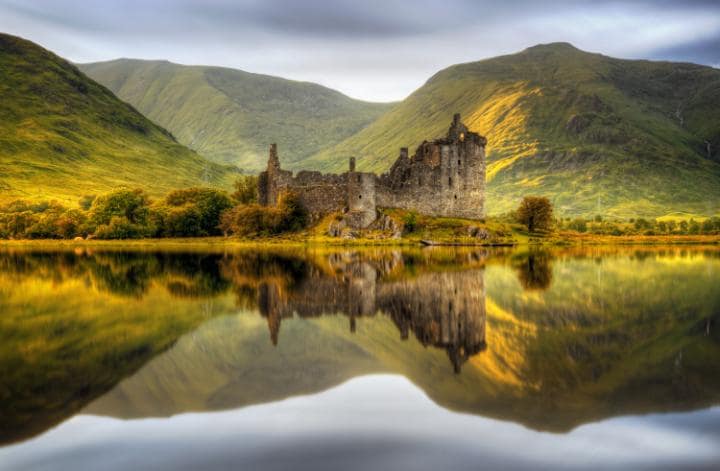
Lochawe, Argyllshire, Scotland
Neil (or Nigel) Campbell of Lochow, Knight, joined Robert Bruce in 1296 and fought for him in almost every action between Methven and Bannockburn. He m 1st ante 1303 the yr dtr of Andrew Crawford, whose wardship had been granted to him by King Edward I, and had with other issue:
..A1 Colin, his heir [see below]He m 2nd (it has been said) Margaret Cameron, possibly the widow of Hubert de Multon, and had by her issue:
..A2 Duncan Campbell Macdhonnachie of Inverawe, progenitor of the Campbells of InveraweHe m 3rd, ca 1312, Mary, sister of King Robert I, dtr of Robert Bruce, Lord of Annandale, and Earl of Carrick (in right of his wife), by Margaret dtr of Neil, 2nd Earl of Carrick, Regent of Scotland, by his wife Margaret, dtr of Walter, 3rd High Steward of Scotland, and was granted, together with his wife and their 2nd son John, all the lands held in Scotland by David de trathbogie, 11th Earl of Atholl. By Mary (who m 2nd, 1316, Sir Alexander Fraser of Touchfraser, Great Chamberlain of Scotland) he had issue:
..A3 John Campbell of Moulin, b ca 1313, created Earl of Atholl ca 1320, m Joanna dtr of Sir John Menteith of Rusky and widow of Malise, Earl of Strathern, and was k at the Battle of Halidon Hill 19 July 1333 leaving no issue. His widow m 3rd Sir Maurice Moray of Drumsagard (on whom the Earldom of Strathearn was conferred 1343/4 and who d 17 Oct 1346) and m 4th ante Nov 1347 William Sutherland, 4th Earl of Sutherland (d 1370). She was alive in 1367.
..A4 Dougal Campbell, living 1323, had issue:
….B1 John Campbell, whose dtr Mariota (or Margaret) m as his 2nd wife her 2nd cousin Sir Colin Campbell of Lochow [see below]Sir Neil (Nigel, Niel, Nigellus) Campbell was born in Argyll, Scotland, the son of Sir Colin Campbell. He has been called, “practically the founder of the Argyll family.”
He was made by Edward I, balie over the lands from Loch Fyne to Kilmartin in Argyll. He was knighted by Alexander III. He joined Robert the Bruce in 1296.
He was called “one of Robert the Bruce’s worthies.” He conquered the McDougalls and the McPhadens and assisted at the coronation of King Robert the Bruce at Scone in 1306.
He stood by King Robert the Bruce in prosperity and adversity and fought by his side in almost every battle from Methven to Bannockburn. The King had so high a sense of his service that he gave his sister, Lady Mary Bruce, to him in marriage. He was one of the great Barons in the Parliament at Ayr, 26 April 1315, which fixed the succession to the throne.
The chief stronghold of the Campbell family from this period was Innes Chonnel Castle, and it remained so until 1453 when Colin, First Earl of Argyll made Inverary his principle residence. According to one writer, “The massive walls of Innes Chonnel crown the rocky southwestern end of a small island halfway down the eastern shore of Lochawe. The island runs northeast to Southwest and is less than a hundred yards from shore.
According to Raleigh Barlowe (quoting the 1680 manuscript), “When (Robert the Bruce) fled from the wrath and the army of King Edward I of England, Sir Neil was one of those who stood by him and came to his rescue. Edward was supported by many of the leading houses in Scotland including the Lord of Lorne. Sir Neil defied them in finding food and comfort for King Robert. He provided boats to take him to Rachloy where he and Neil’s brother Archibald spent the winter on an island off the Irish coast.
Sir Neil married first, ante 1303, the youngest daughter Of Andrew Crawford, whose wardship had been granted to him.
He is reported to have married second according to tradition, Mariota Margaret Cameron, daughter of Sir John Cameron, a believed to be the widow of Hubert de Multon. She was born 1160 at Locneil Argyll.He married third, Lady Mary (sometimes called Marjorie) Bruce, sister of King Robert the Bruce, and daughter of Robert Bruce, Lord of Annandale, and Earl of Carrick (in right of his wife), by Margaret, daughter of Neil, 2nd Earl of Carrick, Regent of Scotland and was granted, together with his wife and their second son John all the lands held in Scotland by David de Strathbogie, 11th Earl of Athol. By Mary, who married second, in 1316 Sir Alexander Fraser of Touchfrazer, Great Chamberlain of Scotland and had issue:
a) 25. Colin: called Colin Oig or young Colin, the heir
b) Dugald: had an agreement with his Uncle Dugald, 1323
1. John
2. Margaret: m. a kinsman, Sir Colin Campbell of Lochow
c) Duncan of Macdhonnachie: ancestor of Campbell of Inverawe
d) John: 1313-1333, of Moulin; created Earl of Atholl 1320, by cousin, David II; Joanna Monteith daughter of Sir John Monteith of Rusky and widow of Malise, Earl of Strathern, He was killed at the Battle of Halidon Hill, 19 Jul 1333 leaving no issue. His widow md 3rd, Sir Maurice Moray of Drumsagard on whom the Earldom of Strathearn was conferred in 1343/44 and who died 17 Oct 1346. She md. 4th, ante Nov 1347 William Sutherland, 4th Earl of Sutherland who died in 1370. Joanna was alive in 1367.The following story is Quoted from The Highlanders, by Fitzroy MacLean:
Edward I had appointed as his creature in Argyll an Irishman called Macphadian, who rapidly earned a reputation for cruelty and extortion. In about 1298, this Macphadian on Edward’s commission attacked Sir Neil Campbell of Lochow and drove him out of his lands on the southern shore of Loch Awe.Campbell and his people retreated towards Cruachan where a small wooden bridge spanned the gorge as the river Awe runs into the Loch. They destroyed this behind them so that Macphadian’s larger force was unable to follow, and while Cambel guarded the crossing, Duncan de Lorn rode to Stirling to obtain help from (William) Wallace, who gathered a small force and hurried to Glendochart.
Campbell meanwhile, had succeeded in recrossing the Awe, and had taken up a position on Macphadian’s flank when he received intelligence that the Irish Captain intended to seize the pass at Glenorchy. Cambel hastily joined Wallace and Duncan, and their combined force marched over the hills by Dalmally to reach Glenorchy before Macphadian arrived.
They surprised the Irish at the place now called Corrie na Ruaig (the corrie of the fight) and chased them back into the pass of Brander. Macphadian himself jumped into the River Awe, and supported himself against a boulder in mid current, pulled off his armour and swam to the further bank, where he climbed the slope and hid in a cave. Duncan de Lorn followed him across the river, and after a fight in the cave, took his head and placed it on a pinnacle of rock above the battlefield. ***
Niel Campbell was born 1260 in Argyll, Scotland and was the son of Sir Colin Campbell (Cailean M’or), 9th of Lochowe (1225-1296) and Lady Janet Isabel Rosslyn, of Saint Clair (1228-1271). He was also known as Sir Niel Campbell of Lochowe. He married Mary Bruce, daughter of Sir Robert VI de Brus and Isabel de Clare.
https://en.wikipedia.org/wiki/Niall_mac_Cailein
Sir Niall mac Cailein (died 1316), also known as Neil Campbell or Nigel Campbell, was a nobleman and warrior who spent his life in the service of King Robert I of Scotland, His Gaelic name means “Niall, Colin’s son” since he was the son of Cailean Mór. His services to the King elevated the Campbells into the higher ranks of the Scottish nobility.
Marriage and family
As a reward for his loyal services to King Robert, Niall received Robert’s sister, Mary Bruce, in marriage. Niall and Mary had a son, Iain. Robert granted the couple the lands confiscated from David Strathbogie, almost certainly so that Iain would eventually become the Earl, which is indeed what happened.This was part of a general policy by Robert of redistributing lands and titles to his extended kin. Niall, however, had been married previously to Alyse de Crawford, by whom he had at least two sons, Sir Colin Og Campbell of Lochawe and Dubhghall.
In 1315, King Robert granted the barnonies of Loch Awe and Ardscotnish to Cailean for the service of a 40-oared galley for 40 days per annum. This grant, in the view of the most recent historian of the subject, is the real beginning of the Campbell lordship of Lochawe.
In 1326, Robert created the post of sheriff of Argyll, and granted it to Niall’s son, Dougall. Niall probably died in 1316, leaving a strong legacy of heroism and royal favour, from which his offspring would benefit enormously.
History of the Campbell Clan and genealogy:
Neil McCailen More Campbell, Lord of Lochowe, was born in 1258 at Lochowe, Argyllshire, Scotland, and died in 1316. His father was Colin Mor Campbell, and he died Sir Neil succeeded him in estate and title. Sir Neil was a stanch ally and companion of Robert the Bruce, King of Scotland. He was rewarded with extensive grants of land forfeited by the enemies Argyll and Bruce.The king also gave his sister Mary in marriage to Sir Neil in 1295, who appears to have disposed of Mariota Cameron, his first wife whom he married about 1279, in favor of the better offer. This was a common practice at the time, when noble marriages were primarily a means of forging alliances. This royal union resulted in a son John, who was given the title of Earl of Atholl by the king. John was killed at the Battle of Halidon Hill in 1333. ninth Campbell and tenth Knight of Lochow.
Son of Cailein ‘Mor’ (Great Colin) Campbell of Lochow and Janet Sinclair (St. Clair), of Roslin. Neil M’Cailen More-na-Sringe, the ninth Campbell and tenth Knight of Lochow; Lady Marjory Bruce, sister to the King, in marriage, with a grant of several lands then in the Crown by the forfeiture of those who adhered to Baliol. By this lady 1st. Sir Colin, called Callen Oig, or Young Colin.
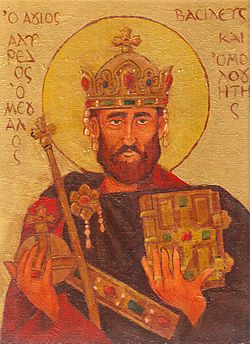

Cailein ‘Mor’ (Great Colin) Campbell of Lochow
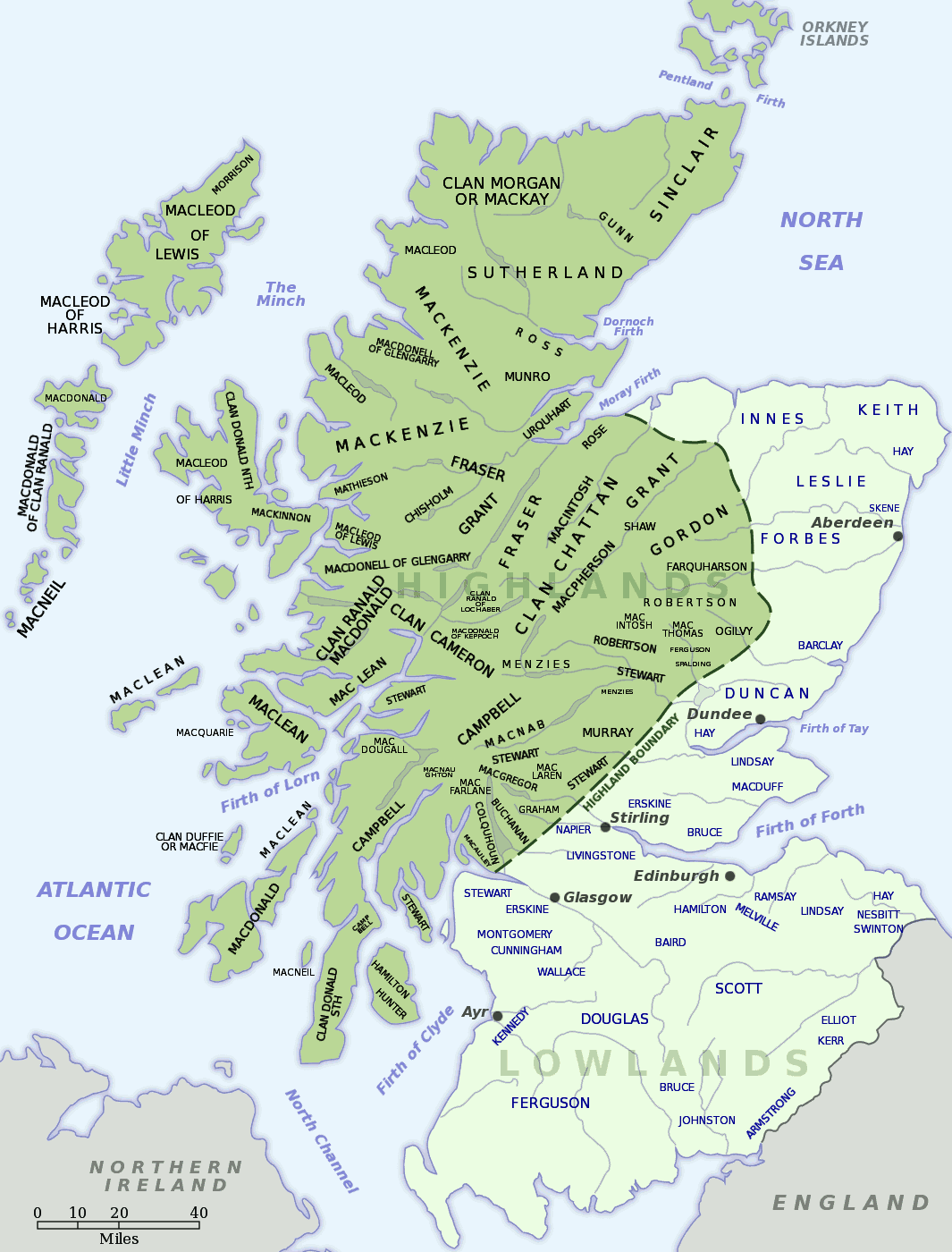
Clans of Scotland
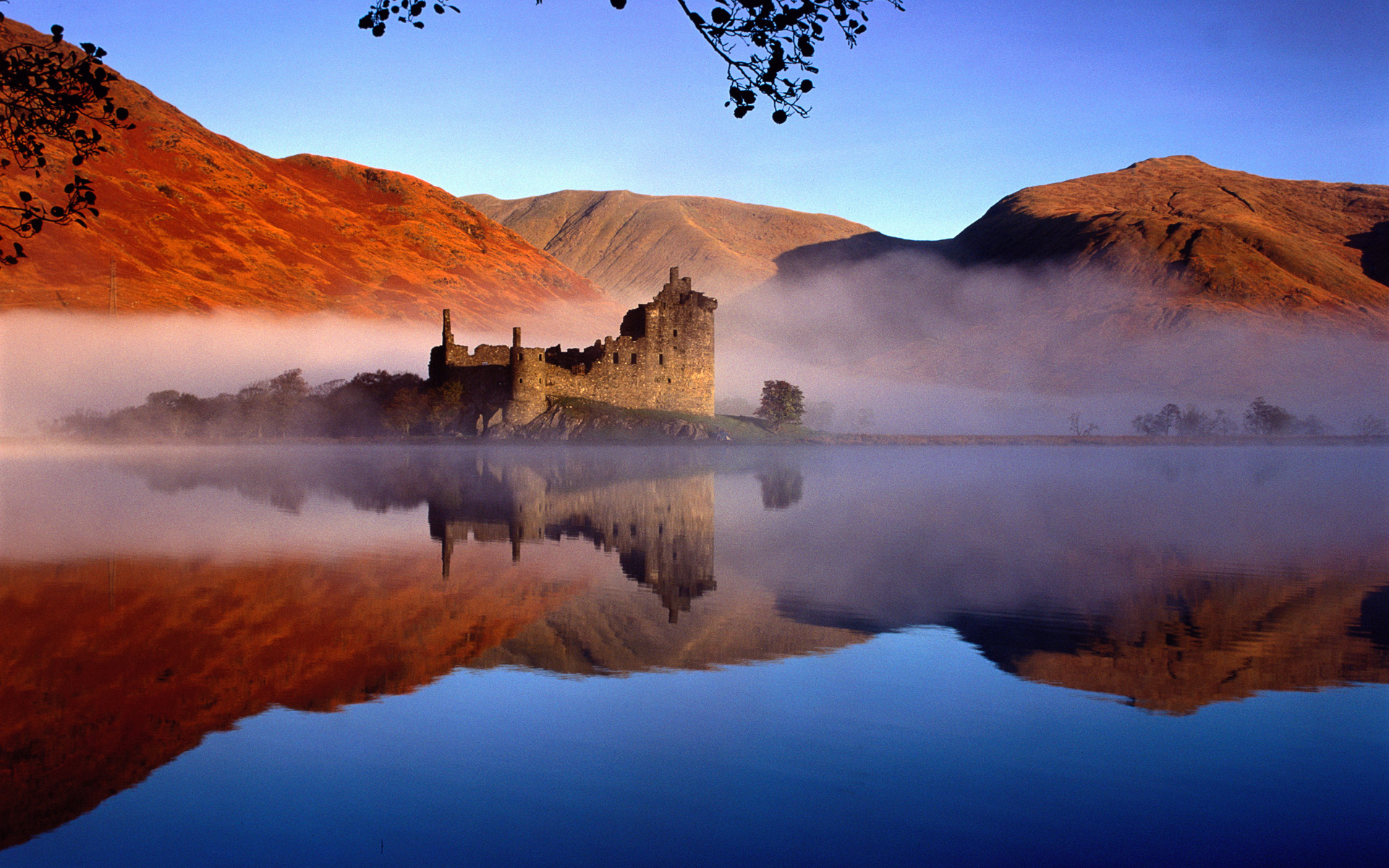
My 19th. Great Scottish Grandmother, Lady Dorothea Marjorie Campbell (MacLeod)
Name: Lady Dorothea Marjorie Campbell, daughter of Sir Neil MacCailean Campbell and Alyse Margaret Crawford
Born: 1310 Dumbartonshire Castle, Dumbartonshire, Scotland
Dumbarton Castle (Scottish Gaelic: Dùn Breatainn, pronounced [t̪unˈpɾʲɛʰt̪ɪɲ]) has the longest recorded history of any stronghold in Scotland. It overlooks the Scottish town of Dumbarton, and sits on a plug of volcanic basalt known as Dumbarton Rock which is 240 feet (73 m) high. Wikipedia

Dumbarton Castle, Dumbartonshire, Scotland, 1800
Married: before 1330 Isle of Skye, Inverness-shire, Scotland to Malcolm Gillicaluim MacLeod, 3rd. Clan Chief
Children: (6) John “Ian Cier”, Norman, Murdo Gleneig, Malcolm, Christina (MacLean), Fingula “Flora” MacLeod
Died: after 1340 in Edinburgh, Midlothian, Scotland
Burial: after 1340 in Iona, Argyllshire, Scotland
Malcolm married a daughter of Sir Neil Campbell of Lochawe, [Alexander MacKenzie, in his HISTORY OF THE MACLEODS (p. 12), says that Malcolm married Martha, daughter of Donald, Earl of Mar. It is possible he may have married her as his second wife.] by whom he had issue…. Chief Malcolm, as he advanced in life, became extremely corpulent, and was known as CALUM REAMHAR MATH (Good Stout Malcolm). The MEMORIAL (1767) says that he was called GILLECALUIM CAS REAMHAR (The Stout-legged Malcolm). While on a visit to his kinsman, MacLeod of Lewis, Malcolm died in the Castle of Stornoway, and his body was conveyed to Iona, where it was buried. His death took place c. 1370. He was succeeded by his eldest son.
SOURCE: Alick Morrison, THE MACLEODS: THE GENEALOGY OF A CLAN, Section IV, Revised Edition, “The MacLeods of Lewis”, Edinburgh, Associated Clan MacLeod Societies, 1974, p. 1. Malcolm (Gillecaluim), [was] ancestor of the MacLeods of Harris, and recipient in the mid-1340’s of a charter of lands in Glenelg from King David II. [The Book of Dunvegan, (I) p. 275; E. W. Robertson, pp. 48, 99, 100.]

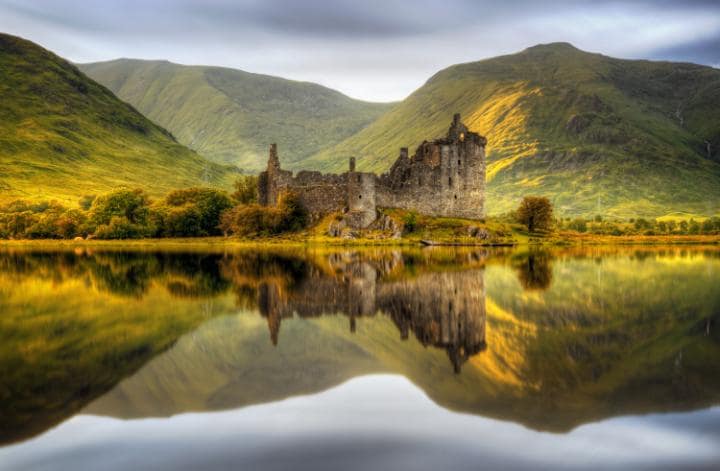 Lochawe, Argyll, Scotland
Lochawe, Argyll, Scotland
Clan Campbell of Scotland
Clan Campbell (Scottish Gaelic: Na Caimbeulaich [na ˈkʰaimbəl̪ˠɪç]) is a Highland Scottish clan. Historically one of the largest and most powerful of the Highland clans, their lands were in Argyll and the chief of the clan became the Earl and later Duke of Argyll. source: Wikipedia
Origins
In traditional genealogies of the Clan Campbell, its origins are placed amongst the ancient Britons of Strathclyde; the earliest Campbell in written records is Gillespie who is recorded in 1263. Early grants to Gillespie and his relations were almost all in east-central Scotland, but the family’s connection with Argyll came some generations before, when a Campbell married the heiress of the O’Duines and she brought with her the Lordship of Loch Awe. Because of this the early clan name was Clan O’ Duine and this was later supplanted by the style Clann Diarmaid. This name came from a fancied connection to Diarmid the Boar, a great hero from early Celtic mythology.
The original seat of the Clan Campbell was either Innis Chonnell Castle on Loch Awe or Caisteal na Nigheann Ruaidh on Loch Avich. The clan’s power soon spread throughout Argyll, though at first the Campbells were under the domination of the Lords of Lorne, chiefs of Clan MacDougall. The MacDougalls killed the Campbell chief Cailean Mór (Colin Campbell) in 1296. (See: Battle of Red Ford). All of the subsequent chiefs of Clan Campbell have taken MacCailean Mór as their Gaelic patronymic.
Between 1200 and 1500 the Campbells emerged as one of the most powerful families in Scotland, dominant in Argyll and capable of wielding a wider influence and authority from Edinburgh to the Hebrides and western Highlands.
Wars of Scottish Independence
The family of Colin Campbell went on to become firm supporters of King Robert the Bruce and benefited from his successes with grants of lands, titles and good marriages. During the Wars of Scottish Independence the Campbells fought for Scotland against the English at the Battle of Bannockburn in 1314.
During the 14th century the Clan Campbell rapidly expanded its lands and power. This is partly explained by the loyalty of Sir Neil Campbell (Niall mac Caile), (d.1315), to the cause of Robert the Bruce – a loyalty which was rewarded with marriage to Bruce’s sister Mary. The family was also closely associated with the Stewarts as well as the Bruces in the time of Cailean Mór. Sir Neil, as a staunch ally of the Bruce was rewarded with extensive lands that had been taken from the forfeited MacDougall, Lords of Lorne and other enemies of the Bruces in Argyll.
15th century and royal relations
Innis Chonnell Castle on Loch Awe, possibly the earliest seat of the Clan Campbell.
The Campbells gave support to the Crown throughout the 15th century. By the end of the 15th century the power of the Lords of the Isles (chiefs of Clan Donald) who were the Crown’s most powerful rivals had been broken leaving the Campbells as the main power in the area. From this time onwards the Campbells acted as the main instrument of central authority in the area and this could be the real cause of the ancient enmity between the Campbells and the MacDonalds.
Descendants of Sir Duncan Campbell, 1st Lord Campbell (Donnchadh) and his wife Lady Marjorie Stewart would be descendants of Robert the Bruce, King of Scotland and Robert II Stewart, King of Scotland. Lady Marjorie Stewart, b. 1390 was the daughter of King Robert II’s son, Robert Stewart, 1st Duke of Albany. This would make all descendants of Sir Duncan Campbell and Lady Marjorie Stewart descendants of Robert I Bruce and most of the early Kings of Scotland.
The first Lord Campbell was created in 1445. It was from the 15th century that the Campbells came to take an increasingly prominent role. The personal reign of James I of Scotland, saw that king launch a great political assault on the Albany Stewarts and their allies in the west, however Duncan Campbell, 1st Lord Campbell (Donnchadh), escaped the fate of his Albany kinsmen who were all either executed or exiled.
Colin Campbell, 1st Earl of Argyll (Cailean) was en-nobled as the Earl of Argyll in 1457 and later became Baron of Lorn and was also granted lands in Knapdale, signs that the Argylls were one of the major forces in Scotland.
In 1493 after the forfeiture of the MacDonald, Lord of the Isles, the Campbell lords may well have viewed themselves as natural successors to the Clan Donald in terms of leadership of the Gaels of the Hebrides and western Highlands. The Campbell lordship thus remained one of the most significant bastions of Gaelic learning and culture in late medieval and early modern Scotland.
In the Battle of Knockmary, 1490, men of the Clan Campbell and the Clan Drummond joined forces to defeat the Clan Murray. This also became known as the Massacre of Monzievaird. In 1499, Campbell of Inverliver defeated the Clan Calder at the Battle of Daltullich and Sir John Campbell, the younger son of the Earl of Argyll, received the estate of Calder and Cawdor Castle through his marriage to the heiress, Muriel Calder.
16th century and clan conflicts
In 1513 the 2nd Earl of Argyll was killed along with many of his clan at the Battle of Flodden.
The Battle of Langside took place in 1568 where the chief of Clan Campbell, Archibald Campbell, 5th Earl of Argyll, commanded the forces who fought for Mary, Queen of Scots.
In 1567, a conflict took place between the Clan Campbell and Clan Arthur. Duncan MacArthur and his son of the Loch Awe MacArthur family, became the victims of their own success when jealousy of their power drove neighbours to drown them in Loch Awe during a skirmish with the Clan Campbell. In the archives of Inveraray Castle a charter dated 1567 confirms that a pardon was granted to the Campbells of Inverawe for the “drowning of Clan Arthur”. It is believed that the MacArthurs trying to defend themselves were driven into the loch. Centuries later in the 1970s an ancient sword was unearthed on the shore of the loch.
In 1594 Archibald Campbell, 7th Earl of Argyll was granted a Royal Commission against the Earl of Huntly but was defeated at the Battle of Glenlivet.
17th century and Civil War
The support that the Campbells gave to the central Government brought them rewards: In 1607 Archibald Campbell, 7th Earl of Argyll was granted the former MacDonald lands of Kintyre and in 1615 Campbell of Cawdor was allowed to purchase the Isle of Islay which had previously belonged to the MacLeans of Duart.
Kilchurn Castle, seat of the Campbells of Glenorchy.
At the Battle of Inverlochy (1645), the Scottish Covenanter forces led by Archibald Campbell, 1st Marquess of Argyll were defeated by the Royalist forces of James Graham, 1st Marquess of Montrose whose army was mainly made up of Scots of the Clan MacDonald, Clan MacLean and others from Ireland. After the Battle of Inverlochy, Montrose and the MacLeans burnt Castle Campbell, but the castle remained in Campbell hands.
In the wake of the Battle of Inverlochy the Clan Lamont took the opportunity to raid the Campbell lands. However, in 1646 the Clan Campbell responded and massacred the Clan Lamont in what became known as the Dunoon Massacre. The vengeful Campbells also ravaged the lands of the Clan MacLean who had fought against them at Inverlochy and in due course the MacLean’s Duart Castle surrendered.
In 1648 at the Battle of Stirling (1648) the Kirk Party Covenanter forces of Archibald Campbell, 1st Marquess of Argyll were defeated by the Engager Covenanter forces of Sir George Munro, 1st of Newmore who supported the Earl of Lanark. Among Argyll’s dead was William Campbell of Glenfalloch killed in action.
In 1672 a feud took place between the Clan Campbell and Clan Sinclair. Debt had forced George Sinclair, 6th Earl of Caithness to resign his titles and estates in favour of Sir John Campbell. Campbell took possession of the estates on Sinclair’s death in May 1676, and was created earl of Caithness in June the following year. Sinclair’s heir, George Sinclair of Keiss disputed the claim and seized the land in 1678.
This was followed by the Battle of Altimarlech, 13 July 1680, between the Clan Campbell and the Clan Sinclair in which the Campbells were victorious. Legend has it that so many Sinclairs were killed that the Campbells were able to cross the river without getting their feet wet. Having failed to regain his inheritance by force, Sinclair of Keiss then turned to the law. He took his place as Earl of Caithness on 15 July 1681, and his lands were restored on 23 September. Campbell was made Earl of Breadalbane by way of compensation.
In 1678 Archibald Campbell, 9th Earl of Argyll led the Campbell of Argyll militia on an expedition to the Isle of Mull and took Duart Castle from the Clan MacLean. However, Argyll was beheaded on 30 June 1685 for his participation in Argyll’s Rising in support of the Monmouth Rebellion to depose Catholic James VII and II and place the Protestant James, Duke of Monmouth on the throne.
Later in 1692 Archibald Campbell, 1st Duke of Argyll again gained possession of the Maclean’s Duart Castle.
In 1692, 38 unarmed people of the Clan MacDonald of Glencoe were killed in the Massacre of Glencoe when a Government initiative to suppress Jacobitism was entangled in the long running feud between Clan MacDonald and Clan Campbell. The slaughter of the MacDonalds at the hands of the soldiers, led by Captain Robert Campbell of Glenlyon, after enjoying their hospitality for over a week was a major affront of Scots Law and Highland tradition. The majority of soldiers were not Campbells, but a roll call from a few months before included six Campbells in addition to Cpt. Robt. Campbell: Corporal Achibald Campbell, Private Archibald Campbell (elder), Private Donald Campbell (younger), Private Archibald Campbell (younger), Private James Campbell, Private Donald Campbell (elder), and Private Duncan Campbell. See also: Earl of Argyll’s Regiment of Foot. source: Wikipedia
| Clan Campbell | |
|---|---|
| Na Caimbeulaich | |
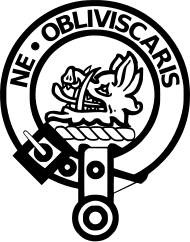
Crest: On a boar’s head erased fessways erased Or, armed Argent, langued Gules
|
|
| Motto | Ne Obliviscaris (Latin for Forget Not) |
| Slogan | Cruachan! (from the mountain north of Loch Awe, overlooking the bulk of the Campbell lands in Argyll) |
| Profile | |
| Region | Highland |
| District | Argyll |
| Plant badge | Bog Myrtle |
| Pipe music | “The Campbells Are Coming” (also known in Scottish Gaelic as “Baile Inneraora”, which translates as “The Town of Inveraray”) |
| Chief | |
 |
|
| The Most Noble Torquhil | |
| Duke of Argyll | |
| Seat | Inveraray Castle
|
| Historic seat | Castle Campbell |

My Maternal 8th. Great Scottish Grandfather, Alexander Campbell, Sr.
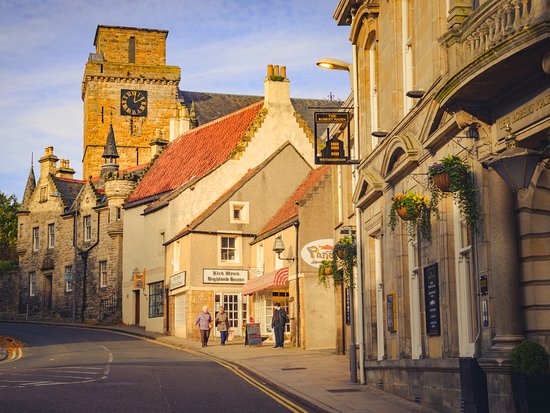
Kirkcaldy, Fife, Scotland
Kirkcaldy is a town and former royal burgh in Fife, on the east coast of Scotland. It is about 11.6 miles north of Edinburgh and 27.6 miles south-southwest of Dundee. The town had a recorded population of 49,460 in 2011, making it Fife’s second-largest settlement and the 12th most populous settlement in Scotland. Wikipedia

Kirkcaldy, Fife, Scotland
Name: Alexander Campbell, Sr, son of Colin Campbell and Dorothy Barbar
Born: about 1620 in Kirkcaldy, Fife, Scotland
Married: 3 May 1647 in Kirkcaldy, Fife, Scotland to Janet Keddie
Children: (8) Margaret, David, Maria, Alexander, Margaret, Marie, Margaret, and Alexander, Jr. Campbell
Died: about 1700 in Kirkcaldy, Fife, Scotland
Buried: about 1700 in Kirkcaldy, Fife, Scotland
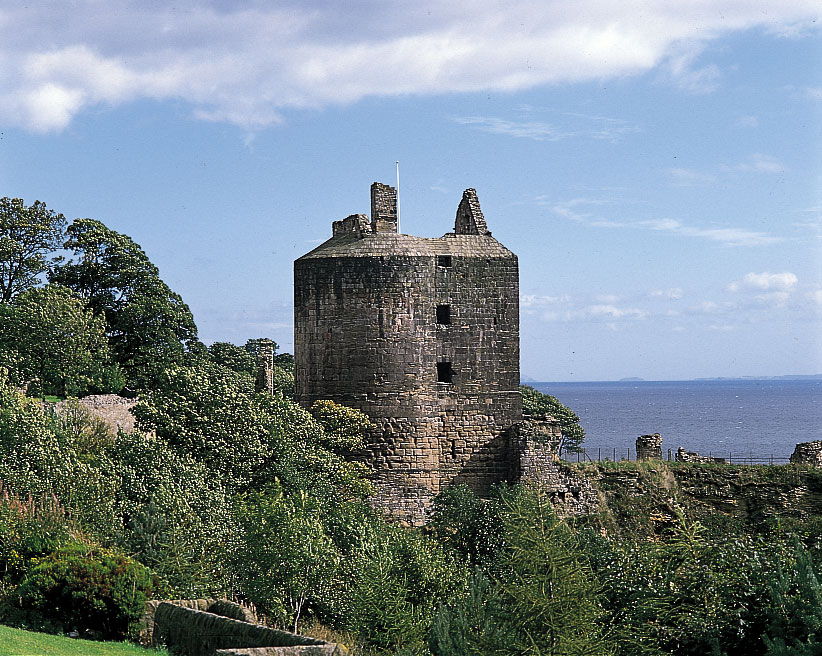
Ravenscraig Castle, Kirkcaldy, Fife, Scotland
Kirkcaldy, town and seaport, Fife council area and historic county, eastern Scotland, on the north shore of the Firth of Forth. First developed by Dunfermline Abbey nearby, Kirkcaldy was a flourishing port during the later Middle Ages. It was designated a royal burgh in 1450, and the royal charter was confirmed by King Charles II in 1662. In the course of the 16th century it became an important commercial centre and seaport, and the local salt trade was then the largest in Scotland. Flemish influence appears in a group of 15th-century houses overlooking the harbour; they now belong to the National Trust for Scotland. After a decline in the 18th century, Kirkcaldy’s fortunes revived with the establishment of its linen industry in the early 19th century and reached another peak after the development of its famous linoleum industry. Large areas of 19th-century factories and warehouses left by its decline were cleared and redeveloped for housing. Kirkcaldy, as the largest town in Fife, has become a commercial centre with many retailers and leisure activities. Kirkcaldy is called the Lang Toun because, after it absorbed Linktown and Abbotshall on the west and Pathhead, Sinclairtown, and Gallatown on the east, its main street reached a length of nearly 4 miles (6.5 km). source: Wikipedia

Clans of Scotland
My Maternal 28th. Great Grandfather, Duina Gillespic Malcolm MacDuibhn Campbell, 1st. Knight of Lochawe
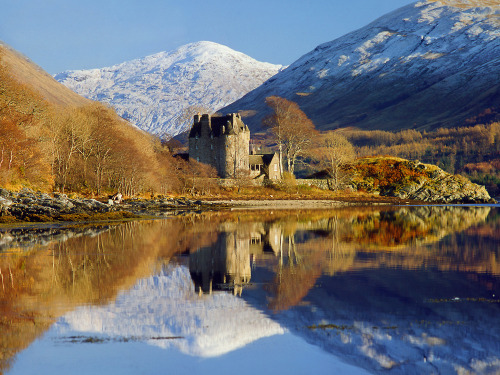
Dunderave Castle, Loch Fyne, Argyll and Bute, Scotland
Name: Malcolm Duina Gillespic Macduibhn Campbell
Birth : 1020 in Lochawe, Argyll, Scotland
Married: 1039 in Normandy, France to Cambus Bellus Beauchamp
Children: Sir Archibald Gillespic Campbell, 20th. Chief of Clan Campbell
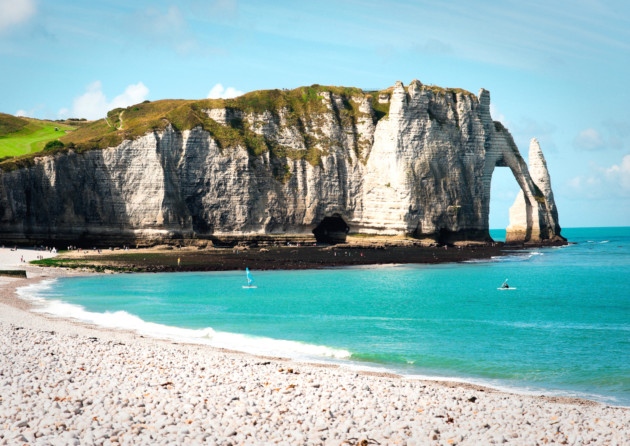
Etrtet Cliffs, Normandy, France
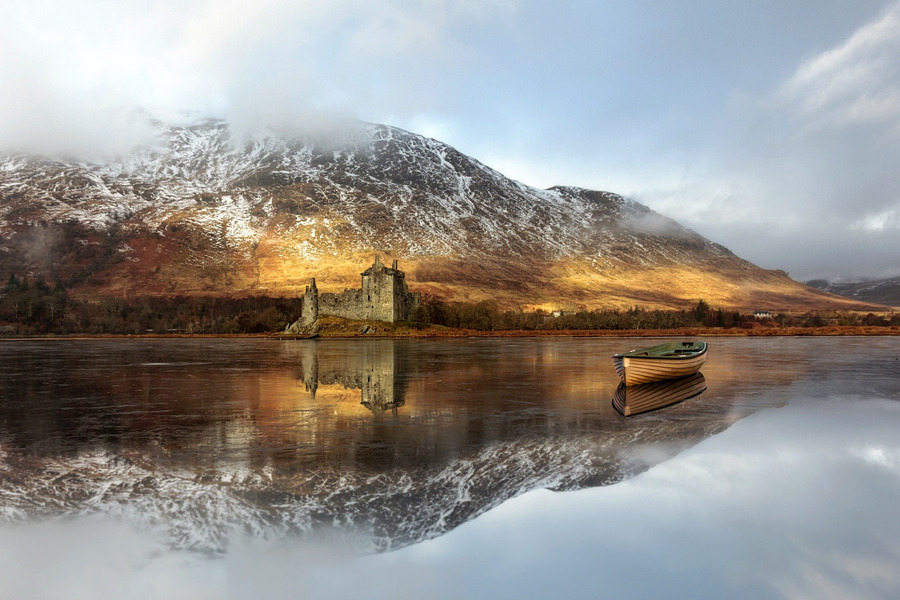
Loch Awe, Argyll, Scotland
Regarding the earlier ancestors of Clan Campbell, there is good evidence that the Campbells themselves traced their descent from an earlier kindred known as the Mac Duibne, or perhaps the Uí Duibne. It has been suggested that the family’s early landholdings, around Menstrie, and in Cowal, were related to the partition of the Mormaerdom of Mentieth in 1213, and that Gilleasbuig may have been a kinsman of Mormaer Muireadhach Mór. The lands around Loch Awe, which would later form the core of their possessions, were not held at an early date.
The name begins to be established in Argyll at the end of the 13th century, as followers of the Earl of Lennox, with Campbells owning lands in Kintyre and the famous warrior Cailean Mór (Great Colin) knighted (1280) and established at Loch Awe. Cailean Mór’s older brother established at Strachurforming the oldest branch of Clan Campbell, see Campbell of Strachur.
Between 1200 and 1500 the Campbells emerged as one of the most powerful families in Gaelic speaking Scotland, dominant in Argyll and capable of wielding a wider influence and authority in the Hebrides and western Highlands. source: Scotweb

Lochawe, Argyll, Scotland
Loch Awe (Scottish Gaelic: Loch Obha) is a large body of freshwater in Argyll and Bute, Scottish Highlands. It has also given its name to a village on its banks, variously known as Loch Awe, or Lochawe. There are islands within the loch such as Innis Chonnell and Inishail.
One of the oldest Argyll clans, the Macarthurs owned lands around Loch Awe which was populated in close proximity with MacGregors, Campbells and Stewarts.
Clan Macarthur artefacts, including the four-poster state bed, are held at Inveraray Castle.
It was from Loch Awe and surrounding area that Clan Campbell established itself as a powerful family. In 1308, Robert the Bruce defeated the Clan MacDougall at the Battle of the Pass of Brander downstream from the loch. Wikipedia
Malcolm Macduibhn
Gender: Male Birth: 1020
Lochawe, Argyll, ScotlandDeath: 1066 (46)
Normandy, FranceImmediate Family: Son of Diarmid MacDuibhn (O’Duin) and Grain O’Neill
Husband of Cambus Bellus de Beauchamp
Father of Paul “The Sporran” Mac Duibhn, Lord of Lochow; Arthur Crunchan; Duncan Duibhn; Archibald Campbell and Gurne MacDuibhnAdded by: Jennifer Schmidt on August 22, 2007 Managed by: Source:
Cristian Felipe Fuenzalida Churchill and 10 others geni.com
Name: Malcolm MACDUIBHN (AFN: 8KFD-B5)
Birth: 1020
Lochowe, Argyll, Scotland
Death: 1066
Normandy, France
Parents
father: Duina Or Drivbhne MACDIUBHN (AFN: 8KFD-59)
Marriages (1)
spouse: Cambus Bellus BEAUCHAMP (AFN: 8KFD-CB)
Children (3)
child 1:
Dionysius DUIBHN (AFN: 8KFD-DH)
birth: 1040
Normandy, France
death:
child 2:
Archibald Or Gillespic CAMPBELL (AFN: 8KFB-Z5)
birth: 1041
Normandy, France
death: 1076
child 3:
Gurne MACDIUBHN (AFN: 8KFD-FN)
birth: 1043
Normandy, France
death:
Submitted By (1) jvterry940859
Citing This Record
“Ancestral File”, database, FamilySearch (http://familysearch.org/pal:/MM9.2.1/MWBN-CGP : accessed 2013-03-12), entry for Malcolm MACDUIBHN.
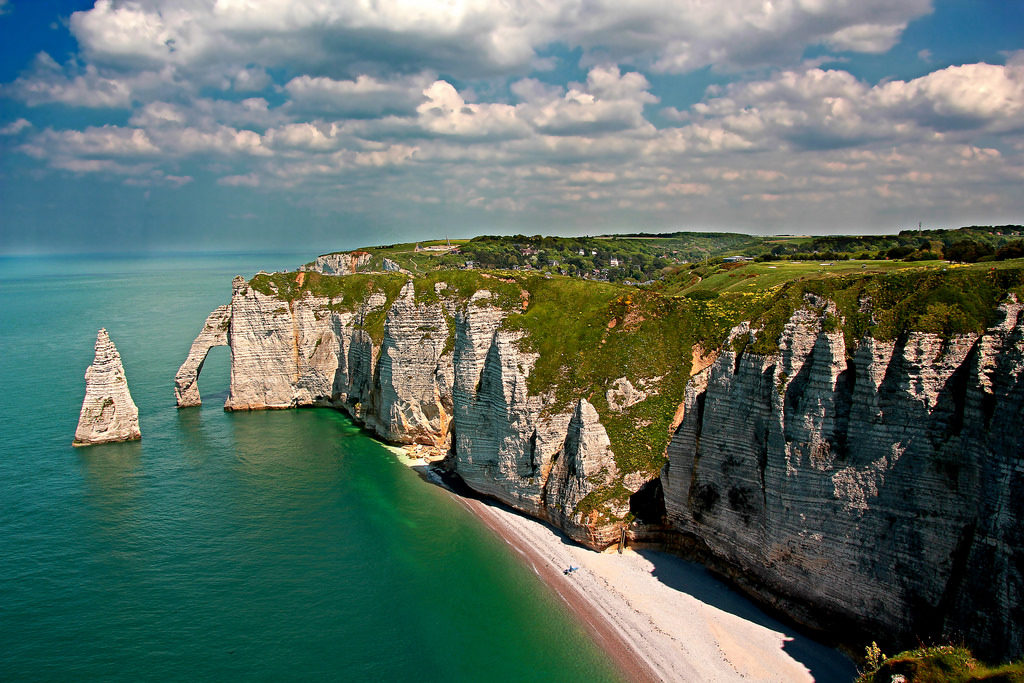
Etrtet Cliffs, Normandy, France








